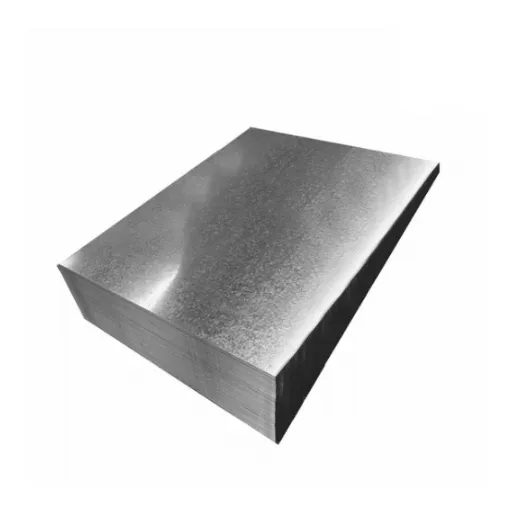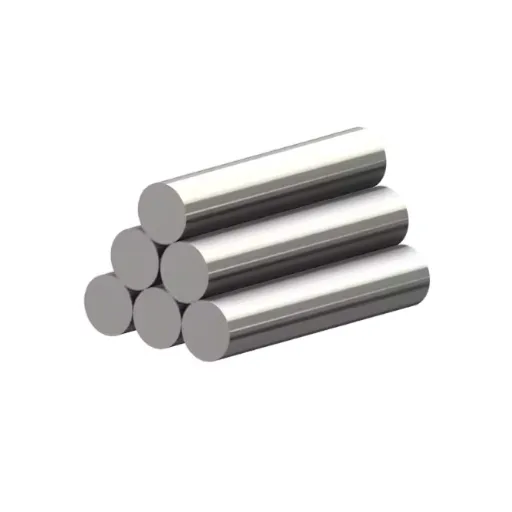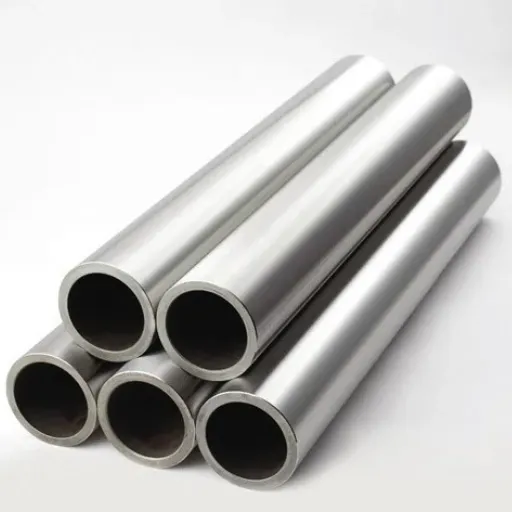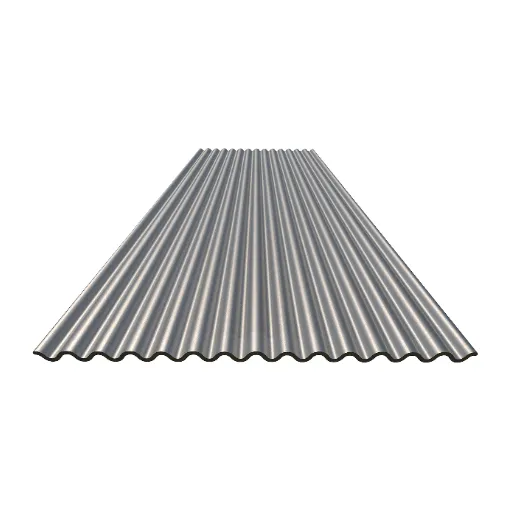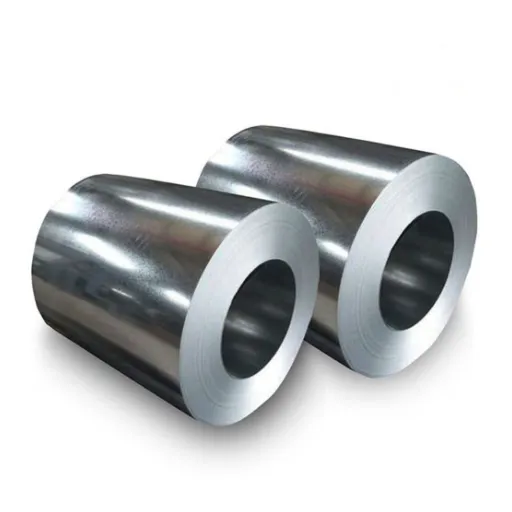The lightest metal of the periodic table, lithium, has always fascinated the scientific fraternity and industries, thanks to the puzzling mix of physical and chemical properties it possesses. With very low density and inordinate reactivity, lithium works at the nucleus of modern technological advances in power storage, pharmaceuticals, and aerospace. In this blog, we will explore the properties of lithium, tracing its atomic structure to its behavior under various conditions, and identify key reasons for its widespread use in the development of several innovative application areas. Join us as we explore the scientific underpinnings and practical implications that have made lithium a cornerstone of tomorrow’s technologies.
Understanding the Lightest Metal: Lithium
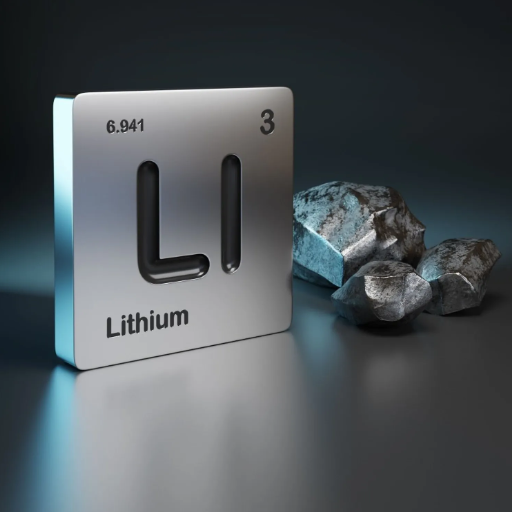
The lightest and least dense of metals, lithium with an atomic number of 3 and corresponding low atomic weight, is an unusual element placed on the periodic table whose properties impart the attributes of very high reactivity and high energy density. These properties make it all the more suitable for energy storage processes, especially lithium-ion battery applications, where it adds to lighter designs and longer performance life. Because it remains quite stable over a wide temperature range, this further makes lithium useful at extreme temperature ratings for aerospace applications and certain medical technologies.
Physical and Chemical Properties of Lithium
Physical Properties of Lithium:
- Atomic Number: 3
- Atomic Mass: 6.94 u
- Density: 0.534 g/cm³ (at 20°C), making it the least dense metal.
- Melting Point: 180.5°C (356.9°F).
- Boiling Point: 1342°C (2448°F).
- Appearance: Soft, silvery-white metal that tarnishes quickly in air.
- Electrical Conductivity: Exhibits high electrical conductivity, enabling its role in batteries and as a reducing agent in electrochemical processes.
Chemical Properties of Lithium:
- Reactivity: It is highly reactive, especially with water and oxygen, to form lithium hydroxide and hydrogen gas when in contact with water.
- 2Li + 2H₂O → 2LiOH + H₂↑
- Oxidation States: Primarily it shows an oxidation state of +1, which is basic to its reactivity and occurrence as ionic compounds.
- Flame Coloration: Produces a crimson-red flame color when burnt in air which is usually taken as an indicator in flame tests.
- Reaction with Air: Lithium atoms combine with oxygen to give lithium oxide (Li₂O), and in the older days, it combines with nitrogen to give lithium nitride (Li₃N).
- Electronegativity: 0.98 (on the Pauling scale) denotes the degree of moderate chemical reactivity it possesses towards other chemical elements.
Density and Lightweight Characteristics
- Density: Lithium has a density of on average about 0.534 g/cm³ at 20°C, the least among all metals and solids under standard conditions. Such a property allows it to float on water-and by the way, it is highly reactive with water.
- Atomic Mass: Being of atomic mass of 6.94 g/mol, lithium is ranked as one of the lightest elements on the periodic table after only hydrogen and helium. Being of lesser atomic mass, it directly contributes to its lightness.
- Crystalline Structure: Lithium at room temperature crystallizes in the body-centered cubic (BCC) structure and this brings about such high low density in comparison of metals with tightly packed arrangements like face-centered cubic (FCC).
- Applications in Lightweight Alloys: That said, its low density offers huge value in the formation of lightweight alloys for aerospace engineering fields, where keeping down weight is critical for fuel efficiency and performance.
- Comparison to Other Metals: The density of lithium is abysmally low in contrast to that of other common metals as aluminum (2.70 g/cm³) and iron (7.87 g/cm³), hence chosen for applications requiring low mass.
Comparison with Other Lightweight Metals
|
Metal |
Atomic Number |
Density (g/cm³) |
Melting Point (°C) |
Key Properties |
Common Uses |
|---|---|---|---|---|---|
|
Lithium |
3 |
0.534 |
180.5 |
Lightest metal, reactive with water |
Batteries, ceramics, medication |
|
Beryllium |
4 |
1.85 |
1287 |
High stiffness, corrosion-resistant |
Aerospace, electronics, optics |
|
Magnesium |
12 |
1.738 |
650 |
Lightweight, ductile, good machinability |
Automotive, alloys, electronics |
|
Aluminum |
13 |
2.7 |
660.3 |
Corrosion-resistant, excellent thermal conductivity |
Packaging, construction, transportation |
|
Titanium |
22 |
4.506 |
1668 |
High strength-to-weight ratio |
Aerospace, biomedical implants |
Applications of Lightweight Metals in Various Industries
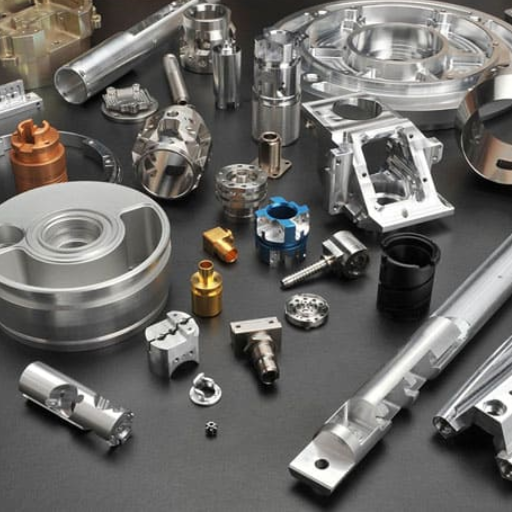
Light metals must be used extensively in different industries due to their strength, durability, and low weight. Below are their major uses:
- Aerospace: Materials like beryllium, titanium, and magnesium find huge application in aircraft structures and satellite components since every ounce counts against performance and fuel efficiency.
- Automotive: Magnesium and aluminum find massive applications for blocks, wheels, and structural parts, which benefit fuel economy and emission control of the vehicle.
- Construction: Aluminum finds its application in structural aspects such as roofing, windows, and curtain walls mainly because of its resistance to corrosion and strength.
- Electronics: Magnesium and beryllium are vital in the development of new-age electronics, wherein they provide solutions that are lightweight and corrosion-resistant to the production of housings or heat sinks.
- Biomedical: Titanium finds extensive use in implant and prosthetics due to its biocompatibility of implant to ensure long-term integration with the human body.
These give heavyweight importance to lightweight metals in machinery for innovation and advancement.
Aerospace Innovations Utilizing Lithium
Thanks principally to its low density and energy storage capability, lithium is indispensable for contemporary aerospace engineering. In the formation of lithium alloys, especially with aluminum, the materials achieve the finest equilibrium among properties: extreme lightness and mechanical strength that ensures a reduction in the total aircraft weight without the downgrade of structural integrity. The materials get ample usage in forming the fuselage skins, wing structures, and internal components, all toward fuel efficiency and extended range.
Lately, lithium-based batteries have revolutionized aerospace-based energy systems. Due to their superior energy-to-weight ratio, these lithium-ion batteries provide the best way of powering the DC avionics and electrical systems, along with powering new hybrid and electric vertical take-off and landing (eVTOL) vehicles. With the growing imperative for greener aviation, lithium-ion batteries contribute a huge cut in carbon emissions from hybrid and fully electric systems. New-age solid-state lithium batteries will bestow the beneficial traits of greater energy density along with better thermal stabilization and safety, ultimately positioning lithium as a key enabler of future aerospace technologies.
Automotive Advancements with Lightweight Metals
Lightweight metals such as aluminum, magnesium, and advanced high-strength steels have found new appreciation in the automotive industry, increased power enhancements, and green vehicle benefits that result from vehicle weight reduction will be obtained in fuel economies and reduced emissions. For instance, its application has increased for chassis and body panel designs because aluminum is considered a metal that balances strength and lightweight properties with good resistance to corrosion. Similarly, magnesium alloys combine the greatest advantage of weight reduction in powertrain components, whereas advanced high-strength steels provide additional design flexibility towards the improvement of crash safety.
For every 10% reduction in vehicle weight, some 6-8% improvement in fuel efficiency can be observed, which indicates the role of lightweight materials in meeting stringent environmental targets. Besides traditional internal combustion engines, lightweight metals are equally needed for maximum range and performance of electric vehicles (EVs), supporting battery systems’ weight. Developments in material sciences, such as nano-structured alloy composites and hybrids, further extend the range of such benefits and explicate how lightweight metals champion the future automotive innovations.
Unique Properties and Benefits of Lithium

Key Properties of Lithium:
- Low Density
Lithium is extremely light due to its atomic mass of 6.94 amu and low density of 0.534 g/cm³, making it the lightest metal. This low density is highly desired wherever weight reduction has significant priority, like in aerospace and electric vehicle industries.
- High Electrochemical Potential
Being the metal with the highest electrochemical potential (-3.04 V), lithium is applied in batteries of high-energy density. This concept forms the backbone of lithium-ion and lithium-polymer battery technologies.
- High Energy Storage Capability
Since it can transfer a greater amount of energy per unit of time efficiently, the element is the key that has opened the door for its storage widely in energy storage systems, thereby supporting modern renewable energy infrastructures like grid-scale energy storage facilities.
- Outstanding Heat Resistance
Lithium with its melting point of 180.54°C and high thermal conductivity finds good industrial applications in metal treatment and heat-resistant alloys.
- Lightweight Alloying Agent
Lithium is generally combined with other light-weight metals such as aluminum and magnesium to obtain a material having a better strength-to-weight ratio. These alloys find their immense use in the sectors of aeronautics and automotive engineering.
Significant Benefits of Lithium:
- Enhanced Battery Performance
Lithium-ion technology includes the advantages of longer life cycles, higher energy density (150- 200Wh/kg), and less self-discharge than various other battery chemistries.
- Sustainability in Energy Systems
Lithium’s application in energy systems increasingly supports renewable energy by allowing the viable storage of solar and wind energy towards climate-saving.
- Advancements in Electric Mobility
The Lithium Battery, in fact, is the very heart of power for Electric Vehicles, making these vehicles much better in terms of range and performance. A typical lithium-ion battery for an electric vehicle can offer a range of over 250 miles depending upon the configuration.
- Support for Space and Aerospace Applications
Strength-to-Weight Ratio and Versatility
Due to its remarkable strength-to-weight ratio, lithium is a prime material for many sectors. By virtue of this property, it also stands parallel with the development of components that are bulky yet strong, a basic requirement in aerospace engineering, where the reduction of weight can double the range of fuel and efficiency of a mission. The versatility of lithium can be seen in its widespread use in battery technologies, especially in the emerging energy sector. These advances in lithium-ion batteries, with energy densities exceeding 250 Wh/kg, significantly enhance the effectiveness and longevity of energy storage systems. Because of these, numerous emerging markets, such as grid-scale energy storage, portable electronics, and electric vehicle powertrains, tap into the utilization of lithium. All these characteristics-rigidity, light weight, and adaptability- make lithium an absolute necessity in present-day engineering and sustainable technologies.
Energy Efficiency and Environmental Impact
Lithium-based technologies bring forth this huge advantage: they enhance practically all other energy efficiencies related to an application. Lithium-ion batteries, for example, have unparalleled charge-discharge efficiencies exceeding 90%, so during their charging-discharging cycles, almost no energy is wasted, which is notably important to the efficacious utilization of stored electricity generated from renewables during periods of low generation.
Precious Metals vs. Lightweight Metals

Precious metals, comprising brass, silver, and platinum, are valued for their rarity, conductivity, and resistance to corrosion—an ideal fit for applications in electronics, jewelry, and catalytic converters. Regarding the properties of aluminum, magnesium, and titanium, lightweight metals are characterized by low density, high strength-to-weight ratios, and resistance to corrosion. These industries include aerospace, automotive, and construction, where reducing weight is crucial for improved performance and efficiency. The most significant difference is in their application. Precious metals are primarily used in applications that require special physical and chemical properties, whereas lightweight metals are typically selected with structural considerations in mind. Both groups of metals, therefore, are significant in modern industry, yet differ as far as subjects of application are concerned.
Defining Precious Metals
Precious metals are some of the rare and naturally occurring metals with immense economic value and a host of other peculiar properties. These materials-gold, silver, platinum, and palladium-are coveted for their ability not to oxidize and rust away with greater efficiency in electrical and thermal conductivity. They are malleable and ductile, too. Being few in number and having desirable properties, they find uses in a plethora of activities such as jewelry, electronics, catalytic converters, and investments. The refinements in industrial processes in recent times have increased the applications of these metals to many technologies related to renewable energy systems, solar panels, and hydrogen fuel cells. A combination of limited supply and critical functions ensures that these precious metals continue to remain of utmost importance to numerous technological and economic sectors.
Unique Properties of Precious Metals
- High Density and Malleability
Precious metals such as gold and platinum, having a high density, are thus suitable for applications that require materials having a substantial mass relative to volume. The metals are also highly malleable and are capable of being manipulated by hammering or pressing into very thin sheets or into other more complex shapes without cracking in a way that is commercially useful. For instance, gold could be drawn into wires thinner than a human hair, which is imperative in electronics.
- Corrosion Resistance
One property that distinguishes one from another among the precious metals is tarnish resistance: this resistance is almost infinite in metals such as gold and platinum, which consequently makes them resistant to the setting of time in actual practical uses like aerospace parts or electromechanical connectors.
- Exceptional Conductivity
Silver has the best conductivity among metals in electricity and heat. This ability restricts it to applications in solar panels and batteries or other energy technologies. Gold, after all, does not tarnish and is thus preferred in microelectronics.
- Reflectivity
Both silver and gold are excellent reflectors of both heat and light, and as a result, their uses include mirrors and optical instruments, as well as methods of reflecting instances of infrared radiation in the construction of spacecraft.
- Catalytic Properties
Applications of Precious Metals
- Electronics and Electrical Components
Gold, silver, and palladium are applied in modern electrical engineering fields for their superior electrical conductivity, corrosion resistance, and malleability. For instance, gold is commonly used for high-performance connectors, switches, and printed circuit boards (PCBs), while silver is mostly employed in conductive pastes for solar cells. It is estimated that approximately 330 tons, or more than 8% of the global gold demand in 2022, was represented solely by electronics manufacturing.
- Jewelry and Ornamentation
The gold, silver, and platinum metals have been very dear in the private sector because their alloying property allowed artists to harden them to the required strengths for wearing while maintaining their luster. For example, the jewelry industry in the world accounted for close to half of all gold consumed in 2021, with an estimated 2,200 tons of gold used for jewelry production each year.
- Medicine and Healthcare
Because of their biocompatibility, antibacterial properties, and tarnish resistance, precious metals find medical use. For instance, platinum and gold are used in pacemakers and stents, while silver finds usage in wound dressings and antibacterial coatings. Some cancer treatments use radioactive isotopes of gold.
- Investment and Financial Security
For centuries, institutions have relied on gold and silver as stores of value. The metals are traded worldwide, with gold reserves serving as a strategic asset held by central banks. Precious metals are also extremely valuable as investment vehicles, including bullion, coins, and ETFs, with global gold investment demand surging 10% year-over-year in 2022 alone, achieving nearly 1,200 tons.
- Aerospace Industry
Future of Lightweight Metals
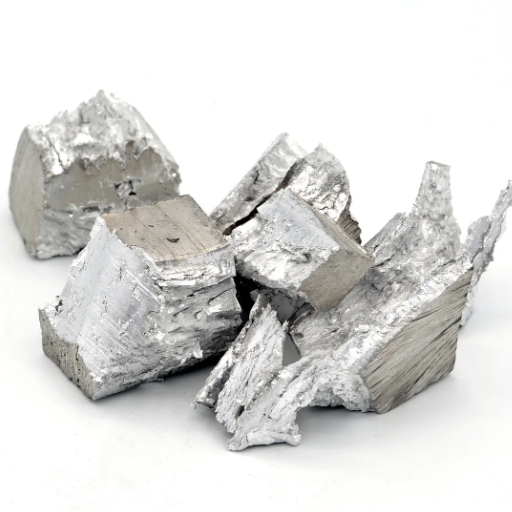
Light metals will have drastically increased applications with rising demand from major industries, viz., aerospace, automotive, and renewable energy. They are advantageous on the grounds of aluminum, titanium, and magnesium for high strength-to-weight ratio and corrosion resistance, being the energy-efficient option. Advancements coming through in processing technologies, including next-generation alloys and additive manufacturing, aim to overcome obstacles in terms of cost and production viability to promote the use of lightweight metals. Also, these metals align with recycling goals, fit into modern industrial structures, and address environmental concerns.
Innovations in Lightweight Metal Applications
Since the early engineering wave, there has been a very significant surge in the application of lightweight metals. One of the major developments is in multi-material component integration, thus combining lightweight metals such as aluminium and magnesium alloys with composites to achieve superior mechanical performance and weight reduction- an initiative that greatly impact the automotive and aerospace industries, where decreases in the overall mass directly improve on fuel efficiency and reduced emissions.
Another set of noteworthy innovations lies in the deployment of additive manufacturing (3D printing) to create highly intricate structures from lightweight metal powders. Not only does this minimize material wastage, but it also facilitates complex custom-designed part production that had been impossible to realize through traditional manufacturing. Titanium alloy parts [produced by additive manufacturing] are advancing both medical implants and aerospace applications with performance improvements, even while retaining lightweight.
By a newer definition of nanotechnology, nanostructured aluminum and magnesium alloys have been manufactured. They possess nice strengths, ductility, and resistance to heat, and are thereby in demand wherever the environment is harsh and highly stressful. Alloy design is thus optimized with an enhance,d finer application scope using predictive modeling and simulation tools in conjunction.
Environmental Impact of Lightweight Metals
The direct environmental impact of the production and utilization of lightweight metals—aluminum, magnesium, and titanium —is both positive and negative. On the positive side, these metals have effectively emerged as alternatives to reducing greenhouse gas emissions in the transportation industry. Their usage in car and aerospace design takes away the weight of the vehicles on a large scale, which consequently improves fuel efficiency of the vehicles, also leads to diminished CO2 emissions per mile traveled. Studies have demonstrated a potential of 20% reduction in energy consumption over the lifespan of a vehicle when aluminum substitutes for heavier materials in vehicles.
Yet, their conduct in mining and the reduction of lightweight metals fosters environmental detriments. For instance, the process of producing aluminum is highly energy-consuming, apart from involving bauxite mining and electrolysis, both of which require high amounts of electricity, mostly from fossil fuels. The carbon footprint would be increased, along with destruction to habitat in the mining regions. Similarly, mining for magnesium disturbs in great measure local ecosystems, while the refinement of titanium creates a huge volume of waste material.
Reference Sources
-
“Light alloys: metallurgy of the light metals”
- Key Findings: This study explores the metallurgy and applications of light alloys, including case studies on their competitive advantages in various industries.
- Read more
-
“The lightest metals: Science and technology from Lithium to Calcium”
- Key Findings: This book discusses the science and technology of the lightest metals, emphasizing their ubiquitous applications and the latest research summaries.
- Read more
-
“Lightweight structural materials in open access: latest trends”
- Key Findings: This research highlights trends in lightweight structural materials, noting that 30% of selected studies focus on multi-material manufacturing.
- Read more
Frequently Asked Questions (FAQs)
Q: What is the lightest metal in the periodic table?
A: The lightest metal in the periodic table is lithium, which is classified as an alkali metal. It has the lowest density among metals, making it incredibly lightweight. Lithium’s unique properties include excellent corrosion resistance and high strength-to-weight ratio, making it ideal for various applications. Due to its low density, lithium is often used in lightweight alloys and batteries, particularly in consumer electronics. Additionally, lithium compounds, such as lithium carbonate, have significant industrial uses. Overall, lithium’s characteristics make it a crucial element in the field of metallurgy.
Q: What are the applications of lightweight metals like aluminum?
A: Lightweight metals like aluminum and magnesium have a broad range of applications due to their unique properties. These metals are often used in aerospace, automotive, and construction industries because they offer reduced weight without sacrificing strength. Aluminum alloys, for instance, are prized for their ease of machining and high tensile strength. In addition to structural applications, lightweight metals are also utilized in consumer electronics, where reducing weight can enhance portability. The properties and applications of lightweight metals make them essential in modern manufacturing processes, especially in sectors focused on efficiency and sustainability.
Q: How does the lightest metallic element compare to other metals?
A: The lightest metallic element, lithium, stands out when compared to other metals like aluminum or titanium due to its extremely low density. While aluminum is also considered lightweight, lithium is about half as dense, making it light enough to float on water. However, unlike heavier metals that may offer greater strength, lithium’s unique properties include high corrosion resistance and excellent mechanical properties at low weights. This makes lithium particularly valuable in applications that require a balance of strength and reduced weight. Its unique properties and applications have led to its increasing use in various technologies, including rechargeable batteries.
Q: What are the unique properties and applications of magnesium?
A: Magnesium is another lightweight metal renowned for its unique properties, including high strength and excellent corrosion resistance. It is often used as an alloying element to enhance the performance of other metals. Magnesium alloys are particularly popular in the automotive and aerospace industries because they provide a good strength-to-weight ratio. Additionally, magnesium can be easily machined and formed, making it suitable for complex shapes and components. Its applications extend to consumer electronics as well, where lightweight materials are crucial. Overall, magnesium’s combination of properties and applications makes it a vital material in modern engineering.
Q: How do light alloys contribute to reduced weight in manufacturing?
A: Light alloys, which often combine aluminum or magnesium with other metals, play a significant role in reducing weight in manufacturing processes. These alloys are engineered to maintain strength while minimizing mass, leading to lighter products that require less material to achieve desired performance. In industries like aerospace and automotive, where weight reduction is critical for fuel efficiency, light alloys can significantly enhance overall efficiency. The unique properties of these materials, such as high strength and ease of machining, make them ideal for complex structural components. By utilizing light alloys, manufacturers can create products that are not only lighter than steel but also exhibit superior mechanical properties.


